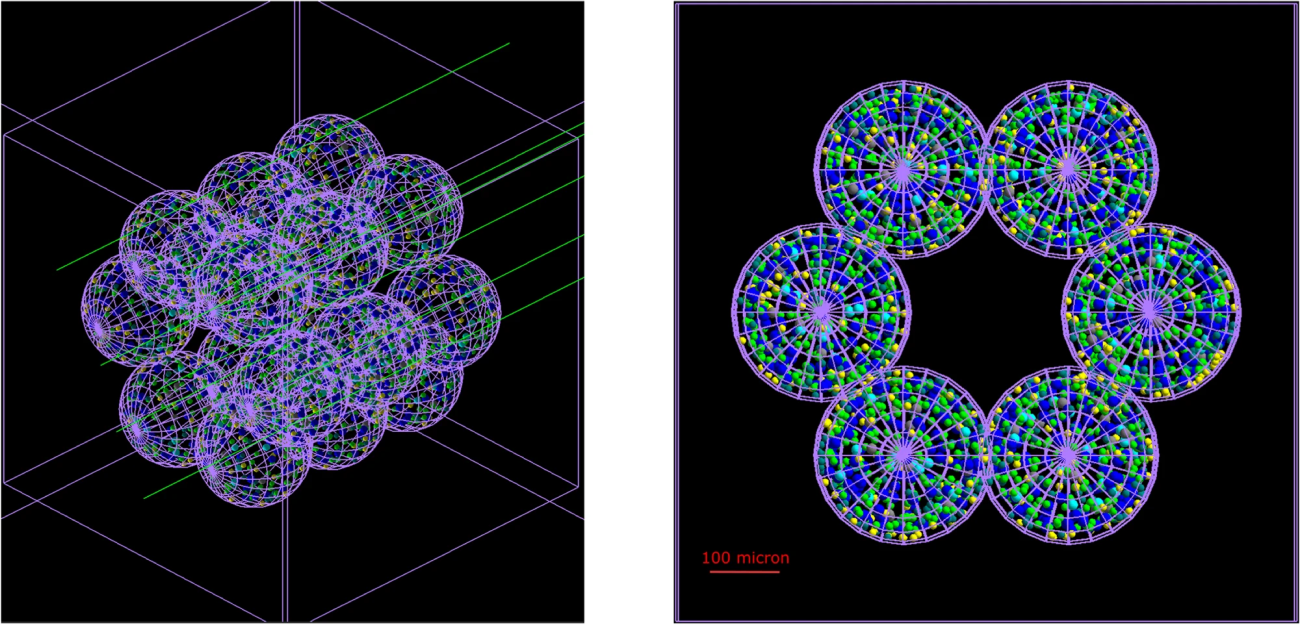A project led by the GSI Biophysics Department, using the BioDynaMo simulation platform, was awarded a place among the Top 10 scientific breakthroughs of 2024, by Physics World. This recognition highlights the project’s groundbreaking contribution to physics and computational biology, specifically in modelling lung cells to personalize radiotherapy—a leap forward in precision oncology.
BioDynaMo, short for "Biology Dynamics Modeller", is a multidisciplinary, open-source simulation platform that originated as a collaboration co-founded by CERN, through CERN openlab, and the Newcastle University. Today, the project is an open-source collaboration with members from the University of Surrey, University of Geneva’s Institute of Global Health, the University of Cyprus, GSI Biophysics Department, the ScimPULSE Foundation and CERN.
At its core, BioDynaMo is an agent-based simulation software designed to model complex systems at an unprecedented scale, initially designed specifically for biological systems it can also be used to simulate, social, economic, environmental, transportation, etc. processes. The platform is optimized to leverage modern computing hardware, including multi-core processors and GPUs, enabling researchers to simulate billions of cells efficiently. Its ability to model cellular dynamics in a 3D physical environment allows scientists to visualize and test cancer growth and treatment responses for individual patients, paving the way for personalized medicine.
CERN’s extensive experience in high-performance large-scale computing has been instrumental in BioDynaMo’s success. The expertise in open-source projects, code modernization, and hardware acceleration provided the foundation for the efficient simulation engine that powers BioDynaMo. This technological backbone was critical in achieving the project’s ambitious goal of modelling intricate biological systems with speed and precision. The development and ultimate success of BioDynaMo did not happen overnight. For nine years, a very dedicated team (Lukas Breitwieser, Ahmad Hesam, Tobias Duswald and Fons Rademakers) worked tirelessly on it.
Since its inception in 2015, BioDynaMo has received support from CERN openlab and initial funding from the CERN budget for knowledge transfer to medical applications. Currently, BioDynaMo is being funded by the CERN and Society Foundation to address three highly relevant societal needs: the fight against cancer, inequalities and dengue. Additionally, BioDynaMo is part of the CERN IT department's efforts to build a Digital Twin Engine for Science, with its integration in projects such as interTwin, making it accessible to a wider range of researchers.
BioDynaMo being an essential part in a project considered one of 2024’s most significant Scientific Breakthroughs marks a pivotal moment in computational biology and highlights the power of collaboration and innovation. As it continues to evolve, the project is poised to redefine the boundaries of precision medicine and computational research, proving the immense potential of combining cutting-edge science with open-source technology.
For more information or to support the BioDynaMo project, visit https://www.biodynamo.org/
Physics World Top 10 2024: https://physicsworld.com/a/top-10-breakthroughs-of-the-year-in-physics-for-2024-revealed/
Image: Alveolar segment model in TOPAS-nBio from Mechanistic model of radiotherapy-induced lung fibrosis using coupled 3D agent-based and Monte Carlo simulations

